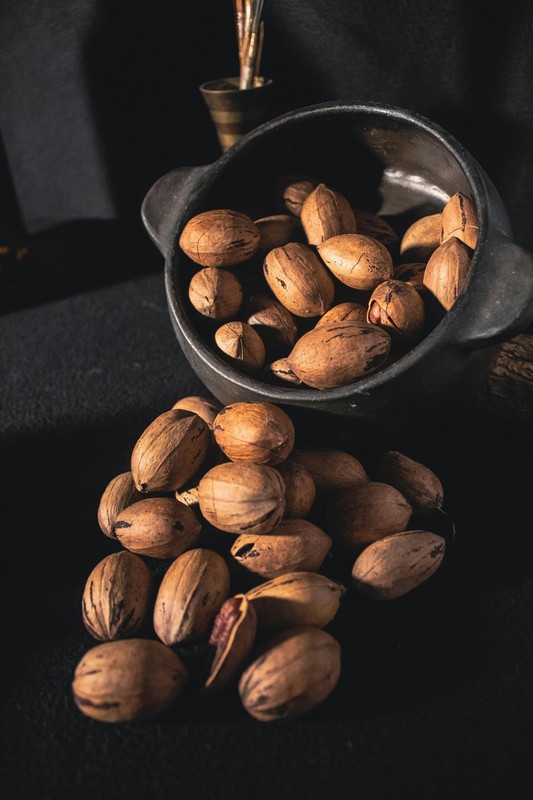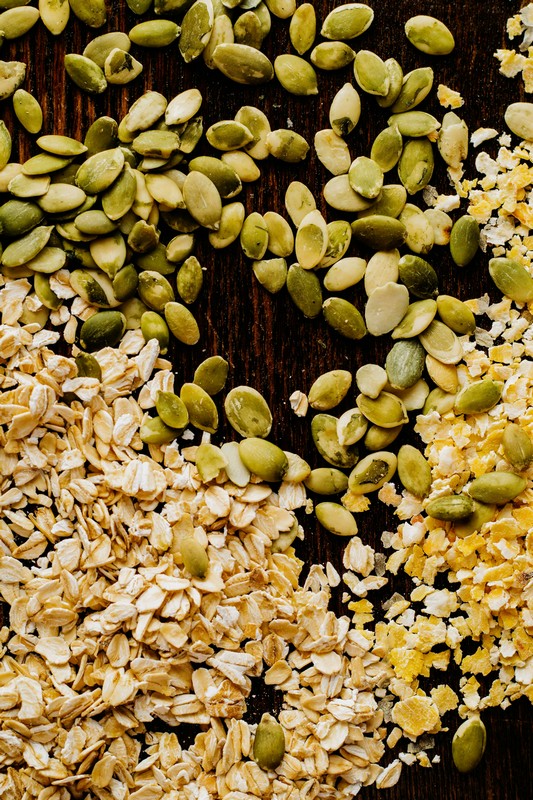Sattvic Diet: A Path to Mindful Eating with Ayurveda
-

A sattvic lifestyle and diet, rooted deeply in the timeless wisdom of Ayurveda, emphasize purity, balance, and harmony in body, mind, and spirit. Clarity and peaceful awareness—qualities embodied by sattva, are at the heart of it. Embracing sattva supports mental and emotional well-being and nourishes the digestive system, which Ayurveda recognizes as the foundation of health.
Gut health plays a crucial role in this balance, especially in managing Ama-Ojas levels. Ama—the toxic buildup from incomplete digestion that clouds the mind and disrupts vitality. Conversely, Ojas—the subtle essence of vitality—reflects a strong, balanced digestive fire and a nourished immune system.
Adopting a sattvic diet can positively influence these energies, reducing Ama and boosting Ojas for optimal wellness.
-
What Is a Sattvic Diet—and Why It Nourishes More Than the Body
Ayurveda is deeply rooted in the framework of the three gunas: Sattva, Rajas, and Tamas.
These principles outline the inherent qualities present in food, nature, actions, and the human psyche.
- Sattva epitomizes harmony and balance, akin to the blossoming flower in the sunlight. It manifests as lightness, serenity, and stability.
- Rajas symbolizes motion, activity, and indulgence, mirroring sprouting seedlings breaking soil in pursuit of sunlight. Excessive rajasic energy manifests in restlessness, stress, and overstimulation, leading to agitation and imbalance.
- Tamas represents inertia and darkness. It’s similar to a seed in the earth or deep slumber. Its dominance causes a feeling of heaviness, lethargy, and a tendency to indulge in processed, heavy, and artificial foods, leading to a sense of aimlessness and melancholy.
-

Sattvic Foods
A sattvic diet focuses on fresh, natural, and nourishing foods that support digestion and enhance prana (life force).
Sattvic foods include a diverse range of fresh fruits, vegetables, whole grains, legumes, nuts, and spices that are carefully cultivated with mindfulness, free from genetic modification, and chemical interventions. These nourishing offerings are essential for maintaining good health and vitality.
Although there are many sattvic foods, it’s important to consider how they are prepared and consumed. Some vegetables have sattvic qualities naturally, but eating them raw may give them rajasic properties, causing restlessness in the body and mind. On the other hand, cooking fruits gently with ghee and spices enhances their sattvic nature, promoting balance and vitality.
- Fruits: Apples, berries, mangoes, and more
- Legumes: Adzuki beans, mung beans, split peas, etc.
- Nuts: Almonds, hazelnuts, pistachios, and similar varieties
- Oils: Coconut oil, grapeseed oil, ghee, etc.
- Spices: Cinnamon, turmeric, cardamom, etc.
- Vegetables: Broccoli, carrots, spinach, etc.
- Whole grains: Quinoa, millet, buckwheat, etc.
While sattvic food nurtures balance and harmony, rajasic and tamasic counterparts veer individuals off course, fostering imbalance and disharmony.
Rajasic food, characterized by stimulation and excess, includes bottled juices, caffeine, spicy foods, deep-fried foods, and all foods that provide quick energy but lack sufficient nutritional value.
On the other hand, tamasic foods epitomize impurity and lethargy, encompassing processed, stale, and canned goods, frozen foods, alcohol, and refined sugars. Consumption of tamasic foods engenders heaviness, inertia, and a sense of negativity, detracting from overall well-being.
-

Rajasic Foods
Rajasic food, characterized by its stimulating properties, can exert both physical and mental stress. While moderate consumption of rajasic foods within a balanced diet may not pose immediate concerns, excessive intake can lead to disruptions in the body’s circulatory and nervous systems, paving the way for various disorders.
- Fruits: Dried dates, bottled juices, guava, passion fruit, papaya, and soursop
- Legumes: Kidney beans, navy beans, pinto beans, red lentils
- Nuts and seeds: Hemp seeds, peanuts, sprouts
- Oils: Hemp oil, peanut oil, sunflower oil
- Other: Fresh cheeses, fermented foods, ice cream, molasses, yogurt, hemp or rice milk, caffeine-containing substances (including cacao, chocolate, coffee, caffeinated teas, decaf tea, and coffee)
- Spices: Chili pepper, garlic, excessive use of any spice
- Vegetables: Eggplant, onions, bell peppers, hot peppers, sea vegetables, tomatoes
- Whole grains: Oats, boiled grains
-
Tamasic Foods
Tamasic food, characterized by impurity or lifelessness, can instill a sense of heaviness and lethargy across physical, mental, emotional dimensions. Consumption of tamasic food induces dullness and diminishes motivation.
- Fruits: Over-ripe fruits
- Grains: Grains exposed to light or aged, heavily refined grains, dried pasta
- Legumes: Canned legumes, chickpeas
- Nuts and Seeds: Dried nuts and seeds
- Oils: Oils aged over a year, including canola oil, vegetable oil, safflower oil
- Other: Alcohol, all types of animal flesh (beef, chicken, fish, lamb, pork, shellfish, turkey), artificial sweeteners, barbecued or smoked foods, items with preservatives or synthetic additives, frozen meals, leftovers, margarine, condiments, refined sugars, aged tea bags, microwaved meals
- Spices: Aged spices
- Vegetables: Mushrooms, pumpkin, squash
Ayurvedic and other holistic diet approaches emphasize the importance of incorporating a diverse array of sattvic foods to support balance and overall well-being. Sattvic foods are those that are pure, fresh, nourishing, and full of vital energy. Incorporating a rainbow of colors in meals signifies the presence of various phytonutrients, antioxidants, vitamins, and minerals essential for optimal health.
-

How Sattvic Diet Impacts Your Mental Energy
- When you eat a meal rich in fruits, vegetables, whole grains, and legumes, you might notice a sense of calm and mental clarity both during and after the meal. You feel more grounded, focused, and at ease, with a steady, positive energy that supports your well-being.
- In contrast, rajasic foods – a meal high in coffee, sugary snacks, or spicy fast food might give you a quick burst of energy, but it can leave you feeling jittery, anxious, or over-stimulated, often followed by a crash that disrupts your mental focus and balance.
- Tamasic foods, which are heavy, stale, and overly processed, tend to dull the mind and body. After consuming a meal of fast food or overly processed snacks, you might experience a sense of sluggishness, lethargy, and mental fog. These foods can lead to feelings of lethargy and apathy, making it difficult to stay motivated or focused throughout the day.
Choosing sattvic foods allows you to experience meals as moments of nourishment and joy, rather than simply filling a void. This mindful approach to eating not only enriches your physical health but also elevates your mental and spiritual well-being.
Take the Personal Energy Profile test to gain insights into your current mental energies and embrace the Sattvic eating approach.



